This post is also available in: Croatian
The Adriatic Highway is one of the most beautiful roads in the whole world. If you find yourself visiting Split-Dalmatia County, from whichever side you approach it, from the direction of Trogir or Makarska, from the sea or from the beautiful Dalmatian hinterland, you will be amazed and fascinated by the rugged coastal landscape, the azure blue Adriatic Sea in which islands are scattered like pearls… The richness of the past and the present intertwine along the entire coast and hinterland. On some of the hills, you will notice both towers and former forts each telling their own stories and the often tragic fates of well known local heroes…
With this article, we’re going to take you on an unforgettable “storytelling road trip” through three cultural interpretation walks, which are carried out as part of the Dalmatia Storytelling destination project, accompanied by licensed guides.
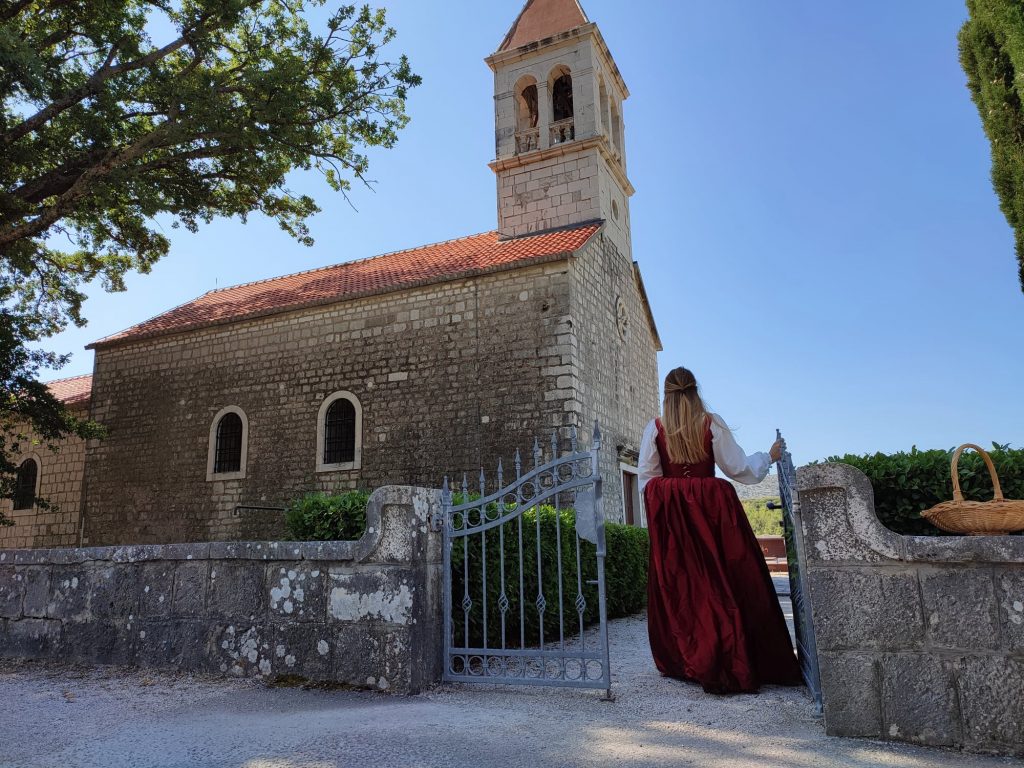
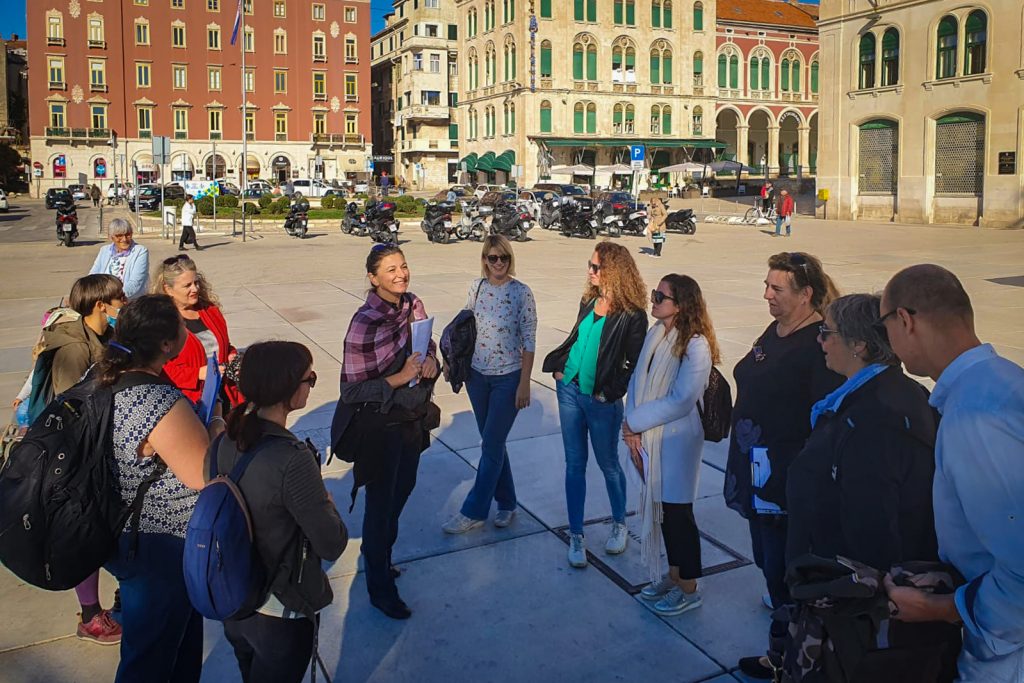
Sixteen reasons why I love Split
Interpreter: Nila Tudor
The tour called Sixteen reasons why I love Split tries to bring Split closer to those who know absolutely nothing about it through simple stories. The tour starts from the beginning of the Riva (Split’s waterfront), with a look at Pazar, which includes the unmissable local coffee and more which encompasses the Split mentality and the phenomenon of always wearing sunglasses, which is characteristic of Split – it’s one way to learn how to recognise who is a citizen of Split in another city, and who is a foreigner visiting Split.

On this tour you will learn how Split owes its name to a seemingly ordinary, fragile, but in fact powerful flower. This plant is called Spanish broom – and the Greek name of this plant is – Aspalathos. Spanish broom was once very widely used for making nets, ropes and as a textile raw material.
Our tour then continues to the model of the Palace, where the story of the construction of the Palace is presented, more about Emperor Diocletian can be learned, and then the tour continues through the cellars which reveal their secrets to us and narrate the continuation of the life of the Palace through many centuries past, all the way to the present day, with special reference to the reason as to why these cellars are so remarkably well preserved.

The easy walk continues on the Peristyle where the Sphinx tells us its story, and the mausoleum/church with its stunning bell tower evokes awe and a desire to visit in everyone who sees it. All of these elements are merged together and permeated into one truly fantastic natural stage – Split’s Peristyle. From the Peristyle, the tour continues in the direction of the Golden Gate with the story of Split during the Middle Ages, revealing some hidden details along the street, from its beginning to the end and telling a childhood story about when the Palace seemed like another world through the naive eyes of a child.

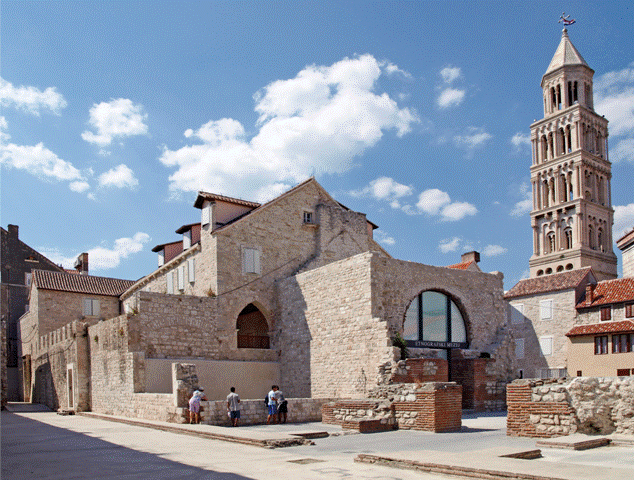
D
Arriving at the defensive courtyard, the church of St. Martin and below the Golden Gate.
We conclude and round off the tour by returning to, this time, the famous Dalmatian mentality that we can work to properly present through the characters of Gregory of Nin and Meštrović.

Stories and legends about the Omis pirates
Interpreter: Senka Vlahović
“Many of our visitors don’t know that once upon a time, access to the city of Omis was not only impossible but also life-threatening. How this situation came to be, quite understandably, will be asked by many people. Today, it is easily reached from all directions, by water – the sea and the river Cetina, but also by land – the Adriatic Highway and the canyon which leads down from the hinterland of Omis.
The answer to this question lies in stories from way back in the Middle Ages. During the time of the Dark Age, sandwiched between the hills and the sea, surrounded by the sparse karst soil, the people of Omis managed to survive as they knew how, so among other things, they worked as pirates.
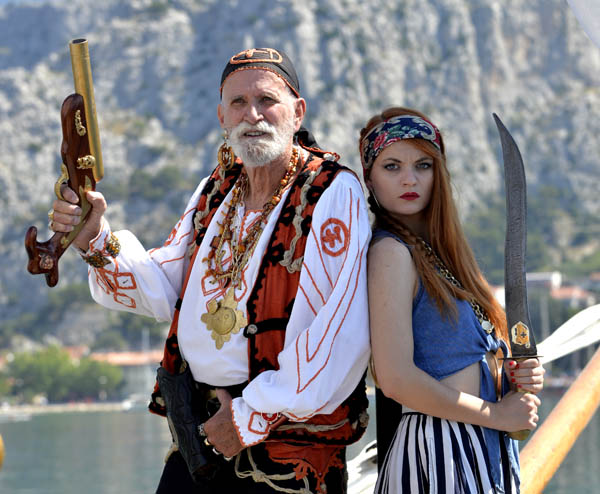
Who were the princes of Omis, under whose leadership the brave Omis sailors controlled the navigation between Split and Dubrovnik for two hundred long years? How did they do it? What tactics did they use? Was piracy was a normal occurrence back then? What does the view from the pirate fort look like?
Find all of this out on a costumed city tour. Get much better acquainted with Omis in a new way by following in the footsteps of Omis’ pirates through the city streets accompanied by Princess Kačić.’’
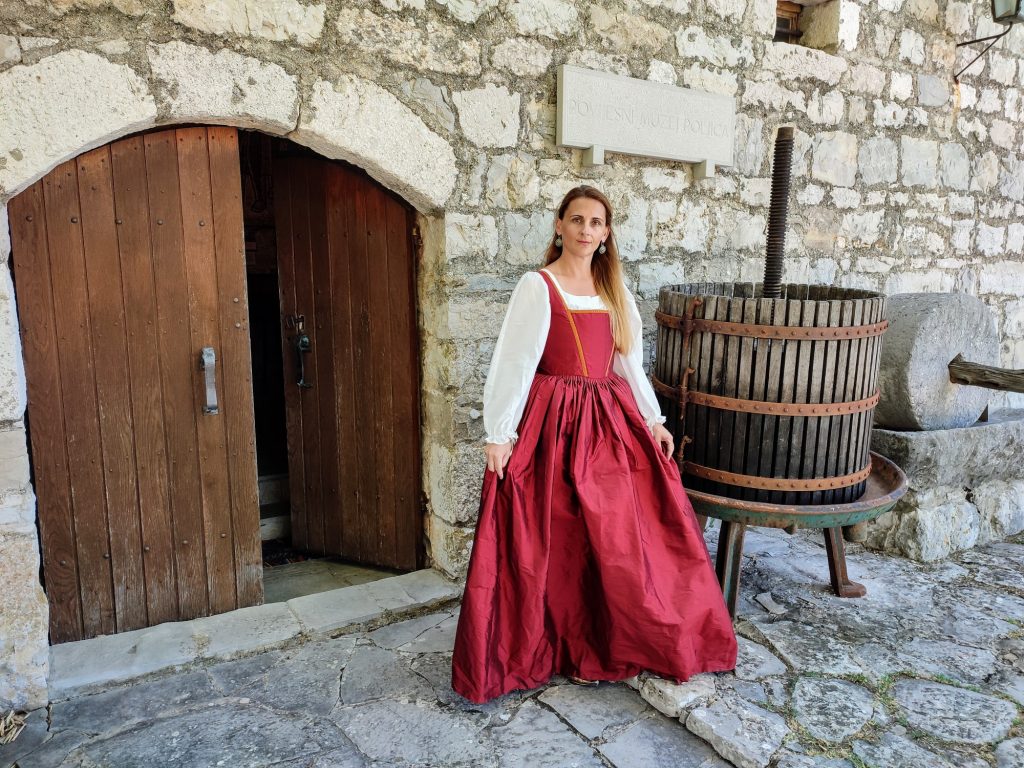
The story of Mila Gojsalić
Interpreter: Nikolina Radmilo Pivčević
After only 30 minutes of pleasant driving through the picturesque Omis hinterland, we arrived in a small village called GATA. There, I was greeted by a brave young woman, Mila Gojasalić. August Senoa even wrote about her. Her figure was carved by Ivan Meštrović at the mouth of the river Cetina near Omis. Jakov Gotovac composed an opera bearing her name in 1951, but I actually got to meet her. Fearless, yet timid, an obedient daughter, in love and above all proud of her Poljica Republic.
Now her home is the Historical Museum of Poljica, where from today you can travel through time with her and discover the stories of that area, her life and the history she wrote. GATA-Omis has a new tourist offer to boast of at the Poljica Historical Museum, where Nikolina Radmilo Pivčević, a costumed heritage interpreter, revives the heritage character Mila Gojsalić.

This post is also available in: Croatian





